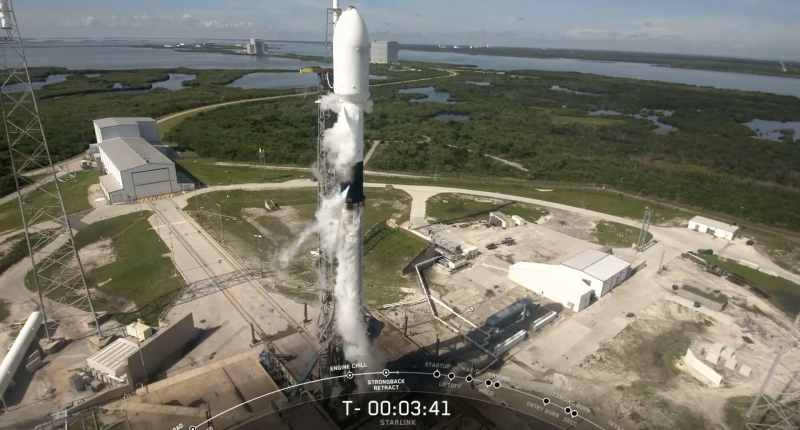SpaceX has launched yet another batch of Starlink satellites into space, marking the 11th such mission to take place. The company had already launched nearly 600 satellites into the orbit, and this mission brings it just one step closer to achieving its goal of providing a low latency high speed global internet service.
The launch took place at space launch complex 40, or simply, Slick 40, in Cape Canaveral, Florida.
As a part of this mission, the company added another 58 satellites to its constellations of lower Earth Orbiting satellites. This is a little less than the usual number of 60. However, there is a good reason for this reduction. The payload also consisted of three of the company’s customer- Planet’s SkySats spacecraft, and the number of Starlink satellites was reduced to make space for these extra passengers. The company had already launched 3 SkySats for planet in June which enable high resolution imaging of a single location upto 12 times a day. With today’s launch, the number of SkySats in the orbit has reached 21, completing its fleet, making it the largest high resolution fleet of satellites in orbit till date.
The main engine cutoff happened about 2 minutes and 30 seconds after the launch, after which the secondary, merlin vacuum engine started. The fairing deployment took place 3 minutes 15 seconds into the mission marking a successful use of the fairing pair.
The stage booster landed perfectly at the ‘Ofcourse I still Love You’ drone landing ship in the Atlantic ocean after 8 minutes 40 seconds, the sixth perfect landing for the booster.
The first major part of the mission, the deployment of the SkySats happened at T plus 12 minutes and 40 seconds. The second SkySat was deployed 13 minutes 10 seconds after the launch and the third one took place at 13 minutes 40 seconds.
The fairing pair had a mixed fate, with one half caught successfully in a boat, while the other made a soft water landing. The company had already managed to complete a successful ‘catch’ of both halves of the fairing in a previous mission.
However, it wasn’t until 46 minutes into the mission that the main event-the deployment of the Starlink satellites took place.
SpaceX has developed a habit of breaking its own records with every launch, and this was no exception. The Falcon 9 rocket used for this launch had flown a total of 5 times before this mission, once in 2018, twice in 2019 and twice already earlier this year. This makes it the 6th flight for this rocket, a company record. 3 of its past missions were similar Starlink launches, which makes today that 4th time that this specific rocket has contributed to SpaceX’s dream of providing low latency high speed global internet.
Starlink is one of those very ‘Elon Musk’-y idea that aims to provide internet to even the most remote areas of the planet. The eccentric billionaire came up with the idea of creating his own constellation that would cover the entire Earth and provide high speed low latency internet to everyone. Under this idea, SpaceX plans to send about 800 satellites into Earth’s orbit. If you think that sounds like a little too much, a major chunk of this goal has already been achieved, and Musk is on his way to starting early trials of the service by later this year.
In other news, Elon Musk gained $8 billion in a single day and now ranks as the 4th richest man on Earth, which must be good news for the Starlink enthusiasts.





